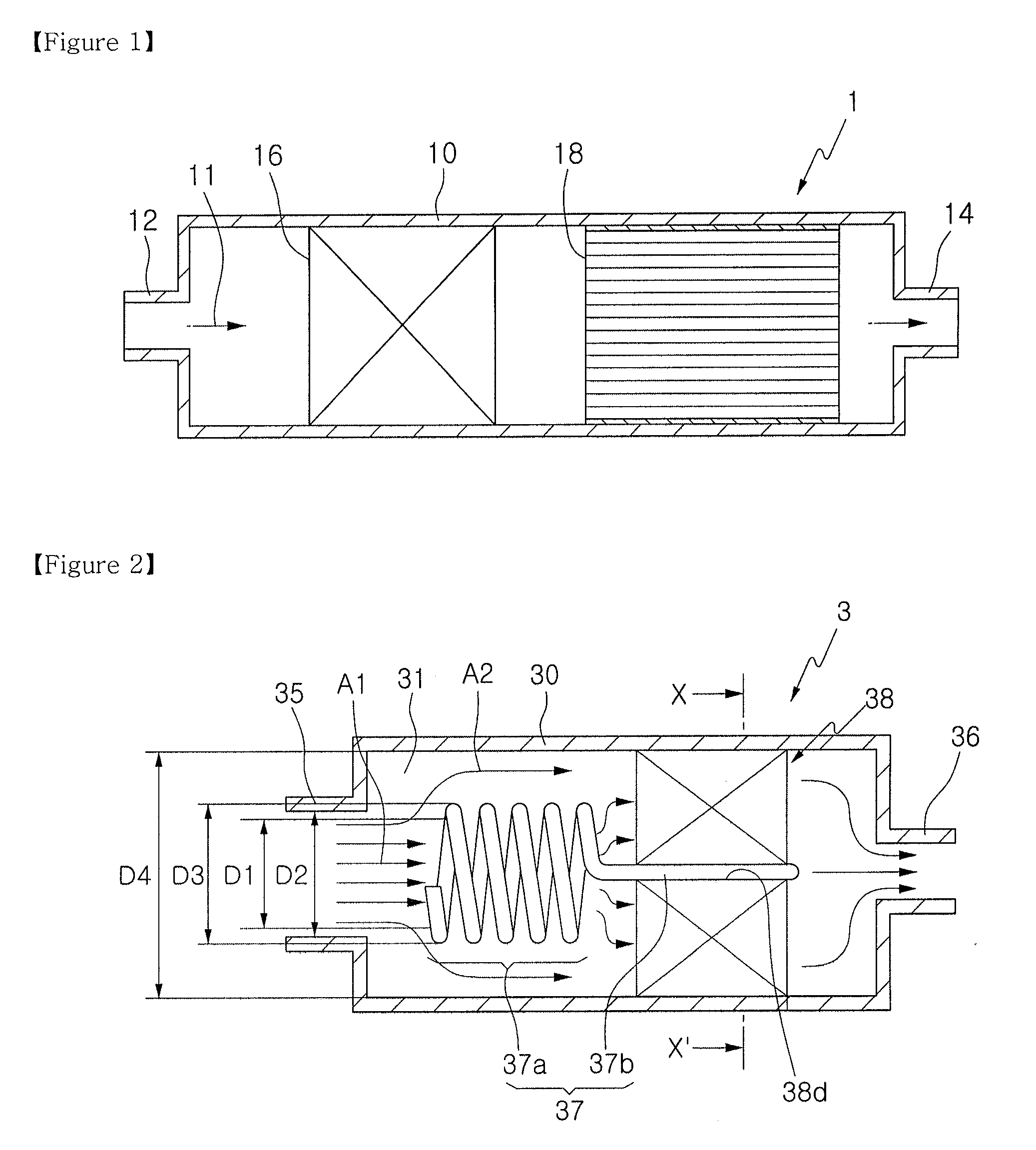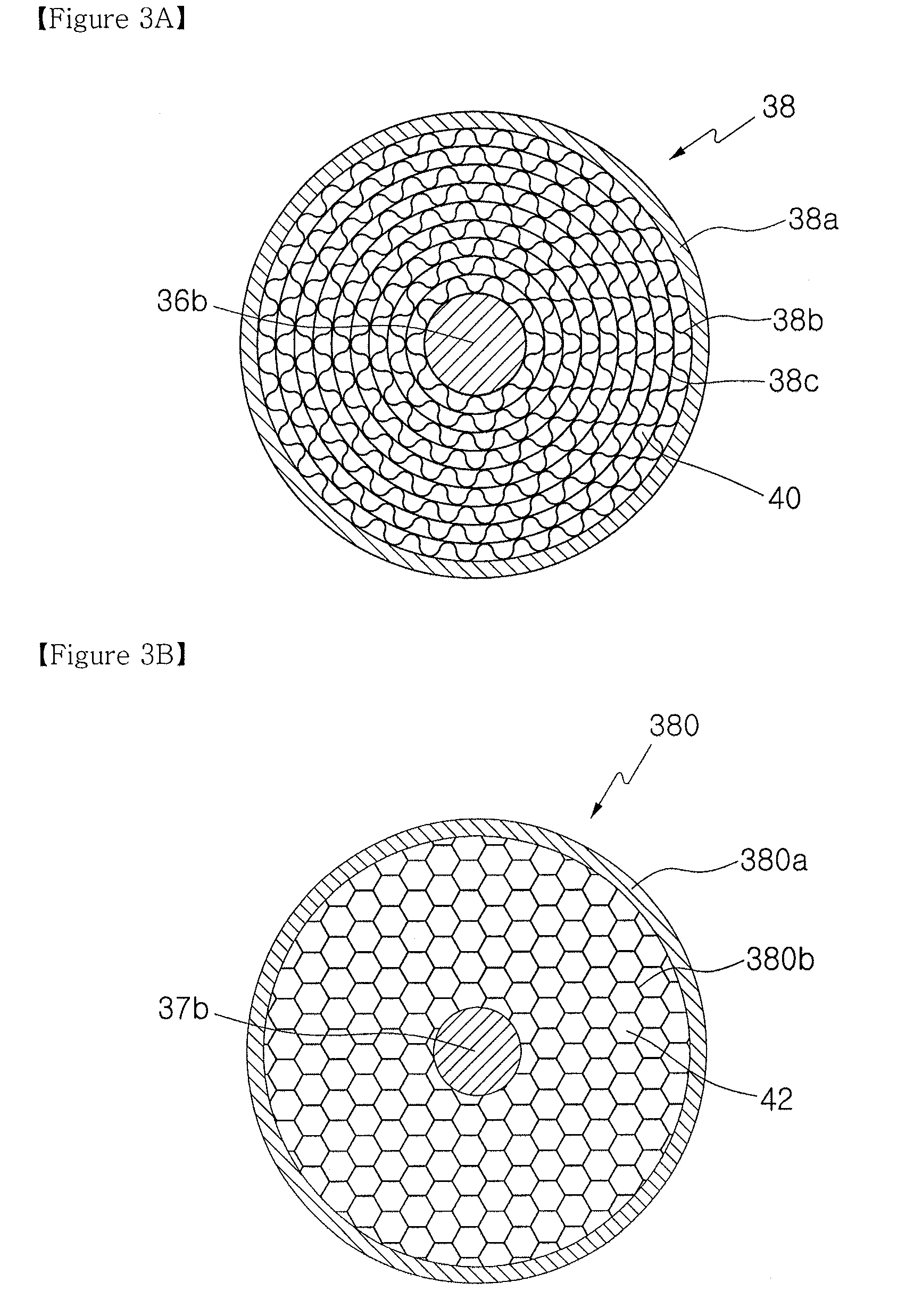Monolith, catalyst convertor for purifying exhaust gas using the same and method for manufacturing the catalyst convertor
a catalyst converter and monolith technology, applied in the direction of machines/engines, mechanical equipment, separation processes, etc., can solve the problems of not reaching the rear end of the support cannot reach the catalyst activation temperature, and the exhaust gas generated by household food trash processing devices is difficult to treat in reclamation and incineration, etc., to achieve high efficiency, reduce electric energy consumption, and enhance heating efficiency
- Summary
- Abstract
- Description
- Claims
- Application Information
AI Technical Summary
Benefits of technology
Problems solved by technology
Method used
Image
Examples
Embodiment Construction
[0224]As described above, the present invention has been described with respect to particularly preferred embodiments. However, the present invention is not limited to the above embodiments, and it is possible for one who has an ordinary skill in the art to make various modifications and variations, without departing off the spirit of the present invention. Thus, the protective scope of the present invention is not defined within the detailed description thereof but is defined by the claims to be described later and the technical spirit of the present invention.
INDUSTRIAL APPLICABILITY
[0225]This invention is applied to a catalyst converter for purifying exhaust gas including an offensive odor gas of a food trash processing device for processing food trashes including an offensive odor or automobile exhaust gas including hazardous substances such as carbon monoxide, nitrogen oxide, and hydrocarbon (HC).
PUM
| Property | Measurement | Unit |
|---|---|---|
| temperature | aaaaa | aaaaa |
| temperature | aaaaa | aaaaa |
| temperature | aaaaa | aaaaa |
Abstract
Description
Claims
Application Information
 Login to View More
Login to View More - R&D
- Intellectual Property
- Life Sciences
- Materials
- Tech Scout
- Unparalleled Data Quality
- Higher Quality Content
- 60% Fewer Hallucinations
Browse by: Latest US Patents, China's latest patents, Technical Efficacy Thesaurus, Application Domain, Technology Topic, Popular Technical Reports.
© 2025 PatSnap. All rights reserved.Legal|Privacy policy|Modern Slavery Act Transparency Statement|Sitemap|About US| Contact US: help@patsnap.com



